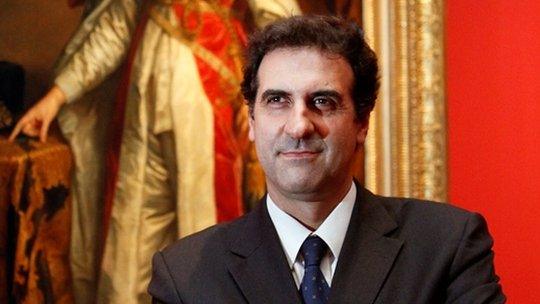National Gallery hopes for 'business as usual' after Brexit vote
- Published
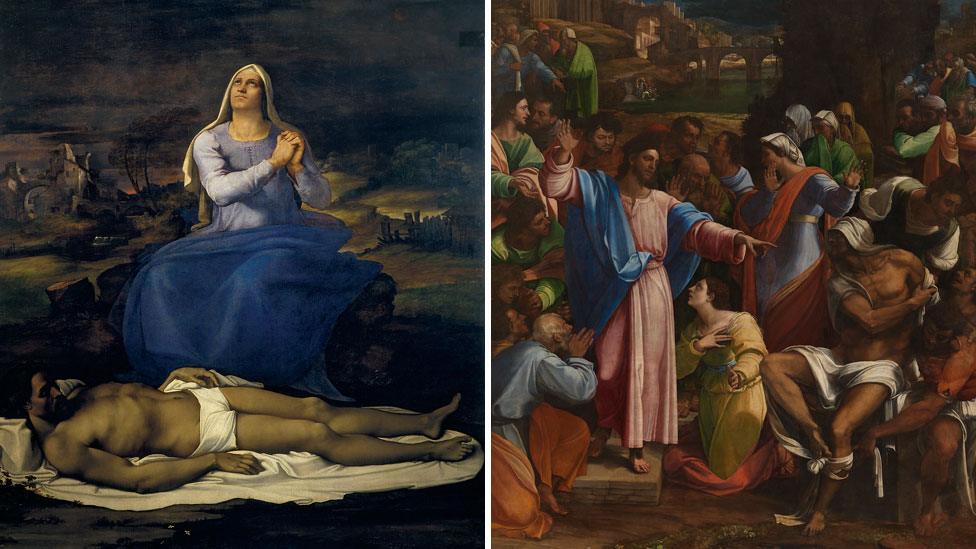
(L-R) Sebastiano del Piombo's Lamentation over the Dead Christ ('Pieta') and The Raising of Lazarus
The National Gallery, which houses a huge collection of European art, hopes to continue business as usual following Britain's vote to leave the EU.
Director Gabriele Finaldi said he wanted collaboration with other European galleries to "continue at the level we are doing now".
He was speaking as he unveiled the London institution's 2017 programme.
It includes a major exhibition that explores the work of Michelangelo and his protege Sebastiano del Piombo.
"This is a gallery of great European art - that's our character, that's our identity," Finaldi said at Thursday's annual press conference.
"We must continue to explore the great history of European art here - that's what we plan to do - that's what the exhibition programme is about."
He added: "I would hope that the relationships we've built up over many years with our colleagues in Paris and Madrid and Berlin and Vienna are relationships that we will be able to continue to build on to produce ambitious exhibition projects - and research projects.
"I hope that these kinds of collaboration will be able to continue at the level that are doing now."
He said he would be looking at how some projects that had EU funding would be affected.
'Seismic changes'
Hannah Rothschild, the National Gallery's chair of trustees, said it was "too early" to say how the current political and economic situation would affect either the institution or the sector as a whole.
"We are going to continue to acquire more great works of art where possible, and work with other institutions and colleagues in Europe and further afield," she said.
"The gallery has been here for nearly 200 years and it has survived many seismic changes including world wars and other skirmishes - so we are going to continue business as usual, shining as a beacon of excellence and a place of contemplation."
The Michelangelo exhibition will focus on the celebrated artist's "friendship and artistic relationship" with Sebastiano del Piombo from the 1510s through to the 1540s.
Sebastiano arrived in Rome from his native Venice in 1511 and soon came into contact with Michelangelo, who was then finishing his decoration of the Sistine Chapel ceiling.
Opening next March, and subtitled A Meeting of Minds, the show will feature the works Pieta for San Francesco in Viterbo (c.1512-16), and the Raising of Lazarus (1517-19).
Finaldi said that because of the scale of some of the objects in the exhibition it would take over the galleries normally devoted to paintings by Rembrandt and Nicolas Poussin, which would be moved elsewhere.
Among the other new exhibitions announced are:

Ariadne by Arthur Streeton (1895)
Australia's Impressionists (7 December 2016 - 26 March 2017) - the first exhibition in the UK to focus on Impressionist artists from Australia, including works by Tom Roberts, Arthur Streeton (see picture), Charles Conder and John Peter Russell.
Monochrome - Painting in Black and White (1 November 2017 - 18 February 2018) exploring the tradition of painting in black and white from its beginnings in the Middle Ages through the Renaissance and into the 21st century.
Reflections - Van Eyck and the Pre-Raphaelites (4 October 2017 - 2 April 2018) which brings together for the first time the Arnolfini Portrait with paintings from the Tate collection and loans from other museums, to explore the ways in which Rossetti, Millais, and Holman Hunt, among others, were influenced by the painting in their work.
Chris Ofili - Weaving Magic (26 April - 28 August 2017) the Turner Prize-winning artist's first foray into the medium of tapestry.
The National Gallery houses more than 2,300 works of European art, including van Eyck's Arnolfini Portrait, Turner's Fighting Temeraire and Van Gogh's Sunflowers.
- Published24 June 2016
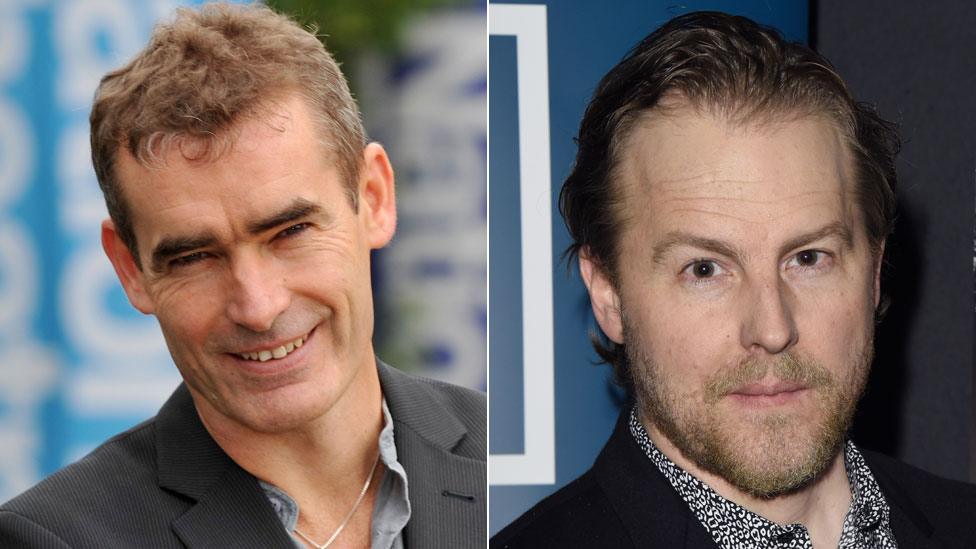
- Published27 April 2016
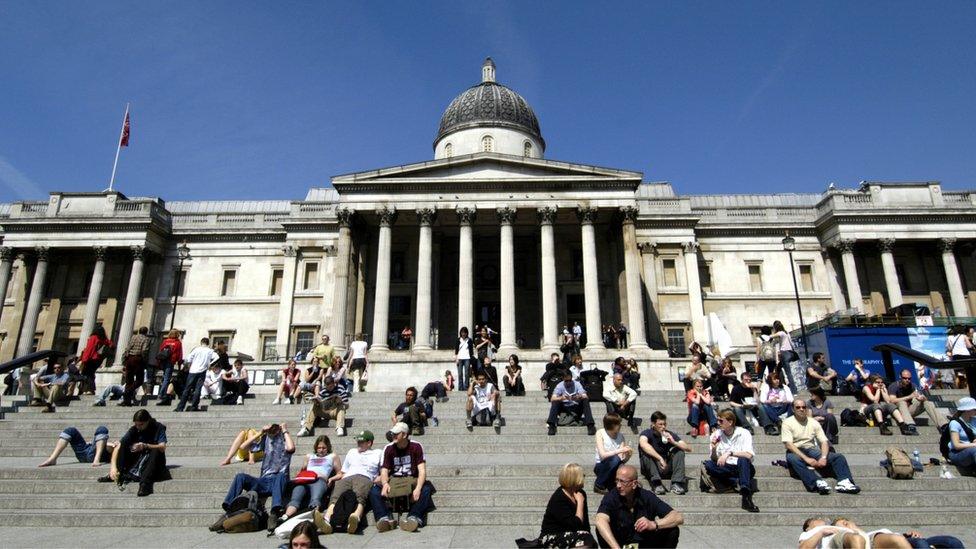
- Published3 March 2016
- Published17 February 2016
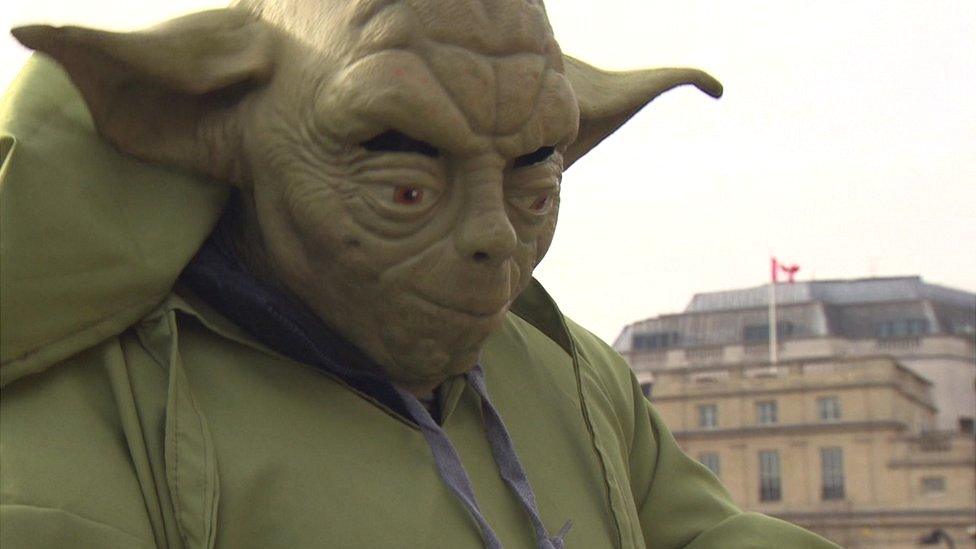
- Published30 September 2015
